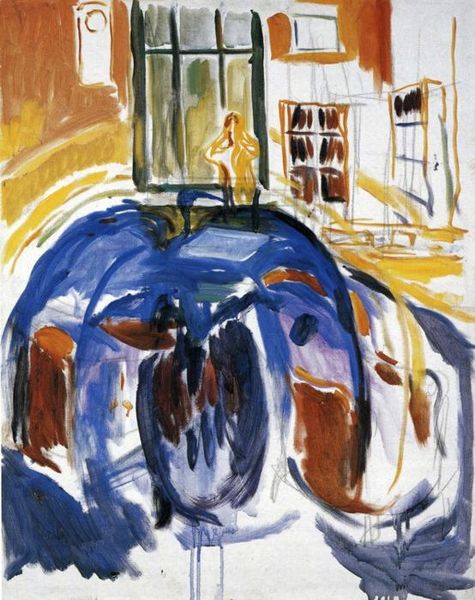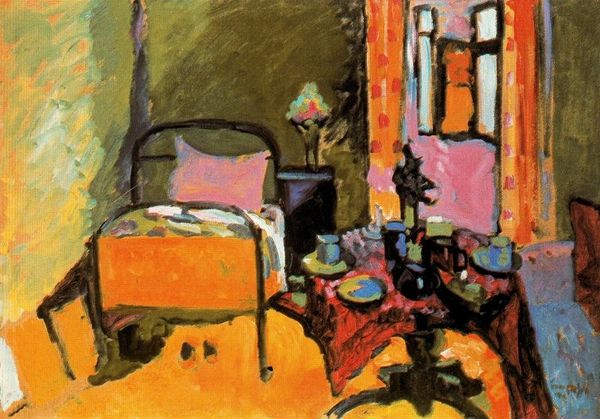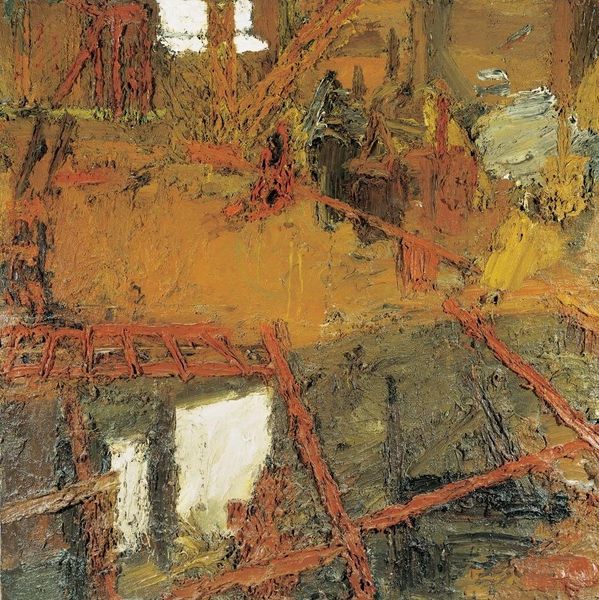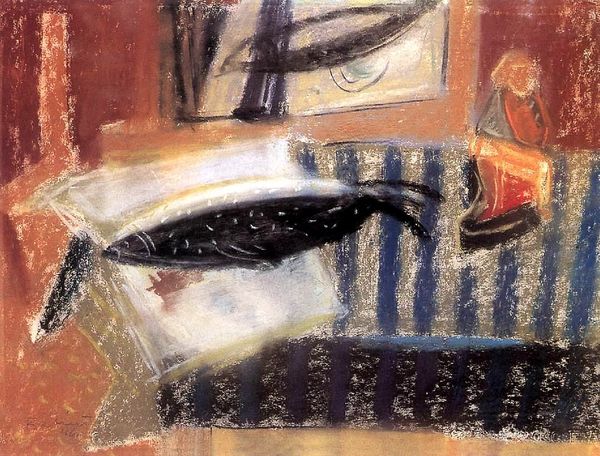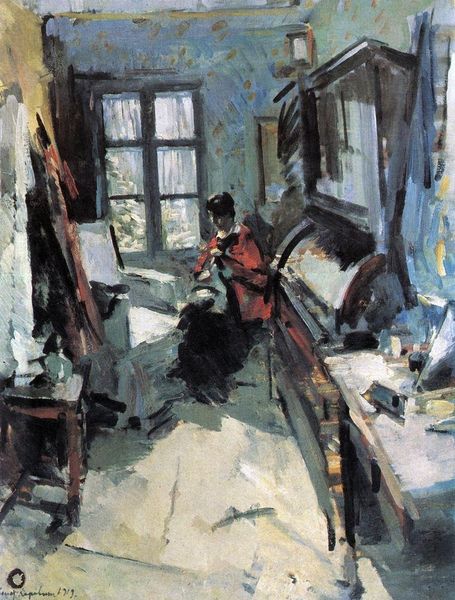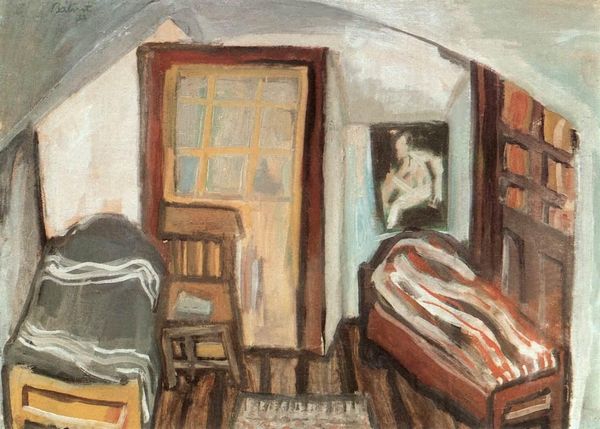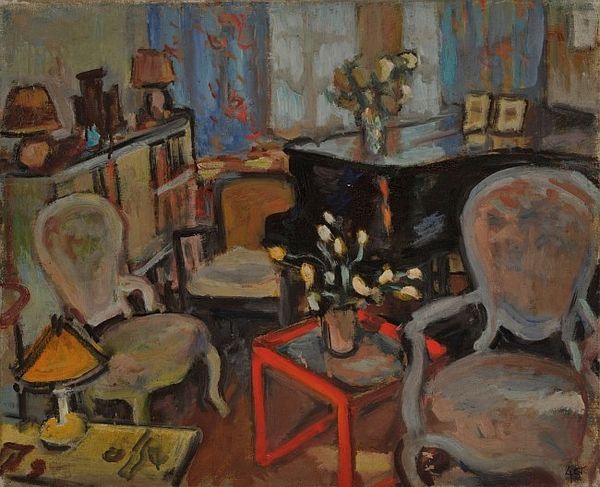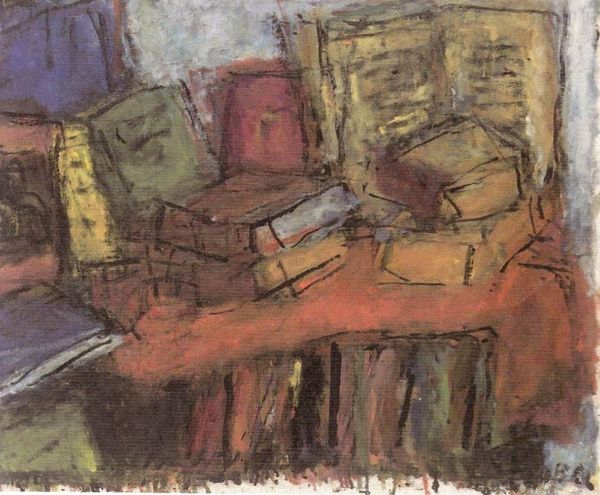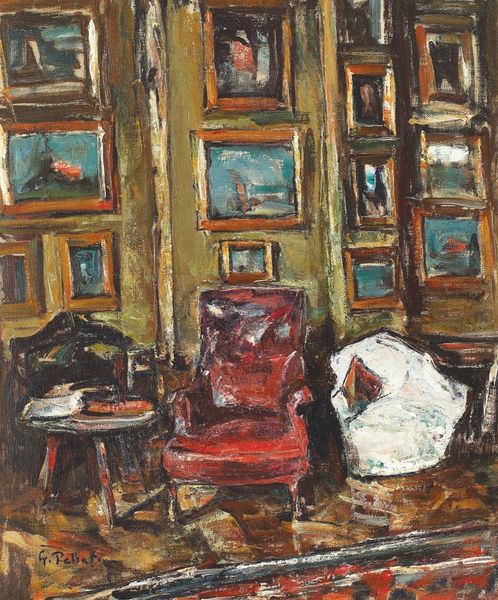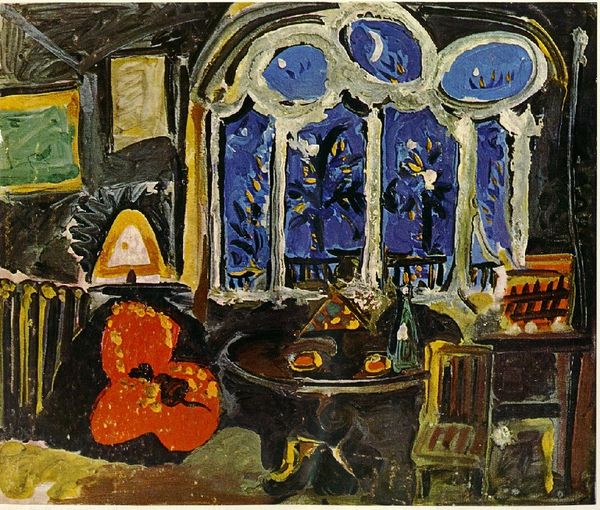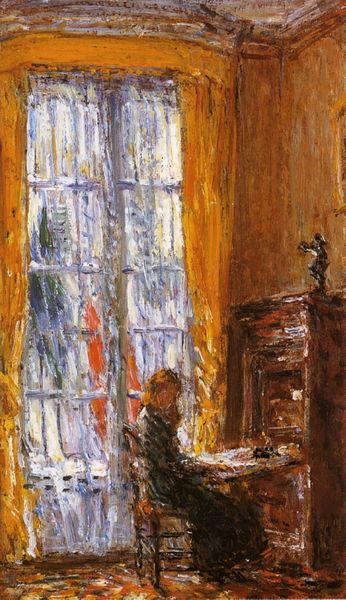
oil-paint, impasto
#
fauvism
#
fauvism
#
oil-paint
#
landscape
#
figuration
#
oil painting
#
impasto
#
cityscape
Copyright: Bela Czobel,Fair Use
Editor: Right now, we're looking at "Czóbel Interior," an oil painting, possibly from the early 20th century, by Béla Czóbel. There's something wonderfully chaotic about this interior scene; the brushstrokes are so vibrant and bold. What strikes you when you look at it? Curator: The first thing that catches my eye is how this artwork is engaging with the Fauvist movement, particularly in its use of intense, non-naturalistic colour. Notice how Czóbel uses these colours, not to represent reality, but to express something more emotional or subjective. Do you think this approach was radical for its time, and if so, how might audiences have responded? Editor: Absolutely. Using such bright, clashing colours in an interior setting, instead of realistic representation, would’ve felt provocative. Maybe even challenged the purpose of art itself? Curator: Precisely. Early 20th-century art saw a break from traditional academic styles, and artists like Czóbel began experimenting with colour and form. The institutional acceptance and critical evaluation of such art faced resistance, often deemed unsophisticated. What effect might that have had on both artists and the public? Editor: I imagine there was a real push and pull between wanting to innovate and grappling with public perception, even facing ridicule perhaps. It shows the importance of movements like Fauvism creating space for artists to experiment, and influencing viewers towards different means of expressions. Curator: Exactly, we can appreciate how Czóbel and his contemporaries contributed to the shift in what was considered aesthetically acceptable and valuable in art, changing the conversation for modern artists. Editor: Thanks for pointing out these different interpretations, and I now see it under new light.
Comments
No comments
Be the first to comment and join the conversation on the ultimate creative platform.


